Asclepias involucrata, Dwarf Milkweed
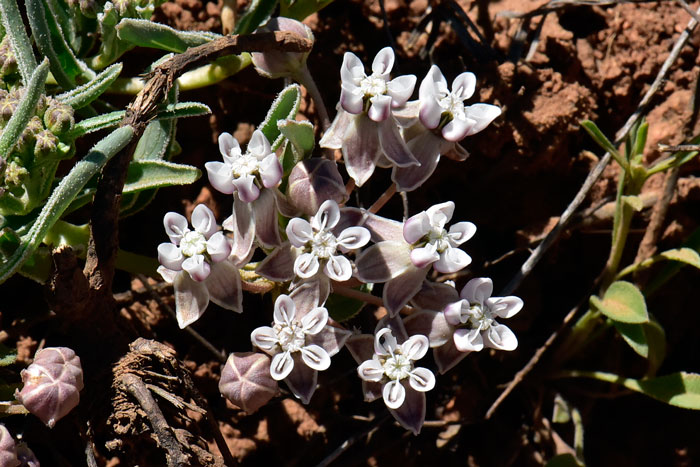
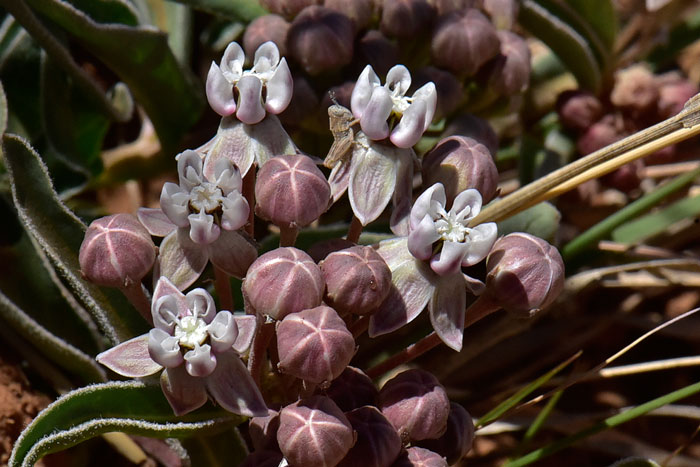
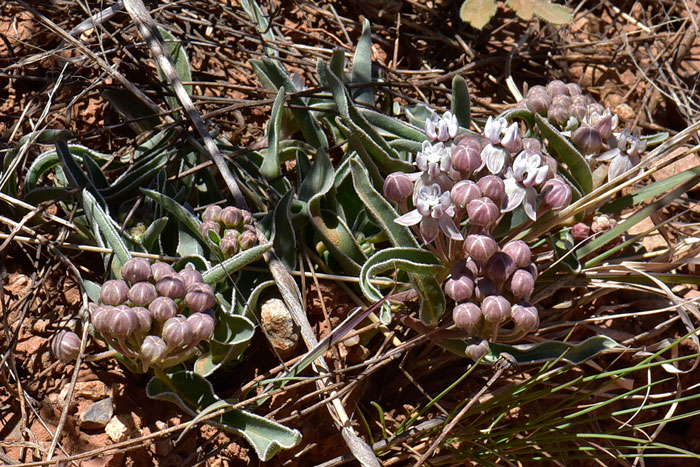
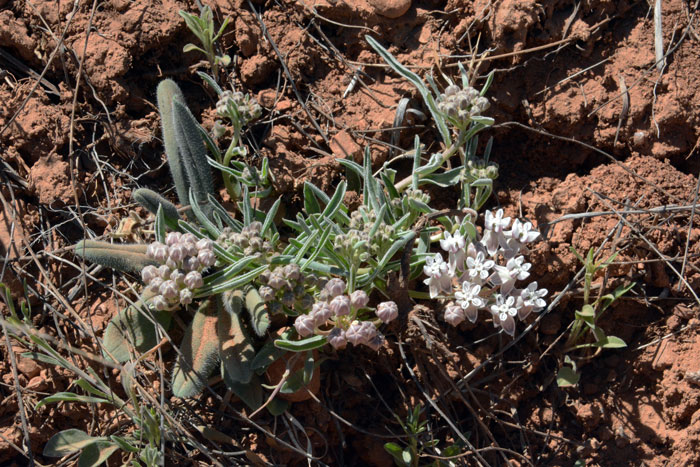
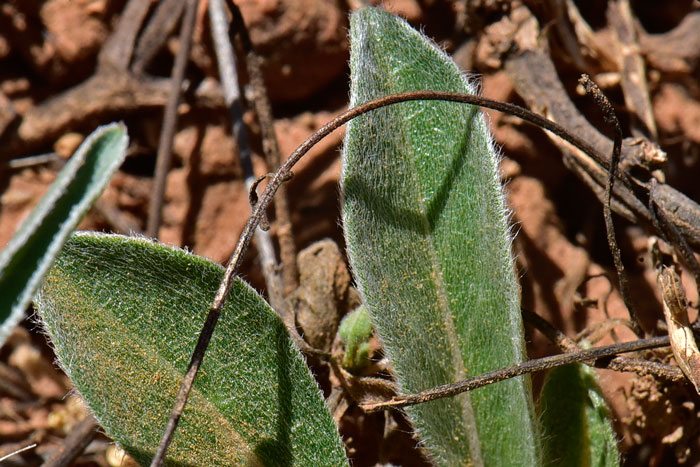
Scientific Name: Asclepias involucrata
Common Name: Dwarf Milkweed
Also Called: Largeseed Milkweed
Family: Asclepiadaceae, Milkweed Family
Synonyms: (Asclepias macrosperma)
Status: Native
Duration: Perennial
Size: Up to 10 inches or so. Low growing.
Growth Form: Forb/herb, subshrub; plants densely covered with short curly hairs, multiply pubescent stems.
Leaves: Green; mostly erect sub-opposite to irregularly alternate; leaf shape lanceolate or oblong-linear, becoming narrower upwards; margins short woolly, upper surface (adaxial) glabrous, lower leaf surface (abaxial) pubescent or sparsely short woolly.
Flower Color: White, or greenish to purplish, hoods variable, mostly white to yellow; flowers small, solitary on terminal tips of longer branches, sessile; fruit an erect follicle
Flowering Season: April to July.
Elevation: 3,500 to 7,000 feet.
Habitat Preferences: Dry plains, sandy desert scrub, grasslands, mesas and oak and pine woodland.
Recorded Range: Asclepias involucrata is found in the southwestern United States in AZ, CO, KS, NM, OK, TX, UT. in Arizona it is found in mostly in the northern and southern parts of the state. It is also native to Sonora, Mexico.
North America & US County Distribution Map for Asclepias involucrata.
U.S. Weed Information: No information available.
Invasive/Noxious Weed Information: No information available.
Wetland Indicator: No information available.
Threatened/Endangered Information: No information available.
Genus Information: In North America there are 76 species and 91 accepted taxa overall for Asclepias. World wide, The Plant List includes 215 accepted species names and includes a further 122 infraspecific rank for the genus.
In the Southwestern United States: Arizona has 29 species of Asclepias, California has 18 species, Nevada has 13 species, New Mexico has 26 species, Texas has 38 species, Utah has 17 species. All data is approximate and subject to taxonomic changes.
Also see in Southwest Desert Flora; Arizona Milkweed, Asclepias angustifolia, Antelope Horns Milkweed, Asclepias asperula, Mexican Butterfly Weed, Asclepias curassavica, Pineneedle Milkweed, Asclepias linaria, Rush Milkweed, Asclepias subulata and Horsetail Milkweed, Asclepias subverticillata.
Asclepias involucrata has been used as a gastrointestinal aid and other purposes by Southwestern U.S. indigenous peoples.
Keres, Western Drug, Gastrointestinal Aid, Infusion of plant used as a stomach medicine.
Navajo, Kayenta Drug, Toothache Remedy, Poultice of heated roots applied for toothaches.
Zuni Drug, Unspecified, Dry powdered root and saliva used for unspecified illness
Zuni Food, Forage, Plant favored by jackrabbits.
See ethno-botanical uses at Native American Ethnobotany, University of Michigan, Dearborn.

